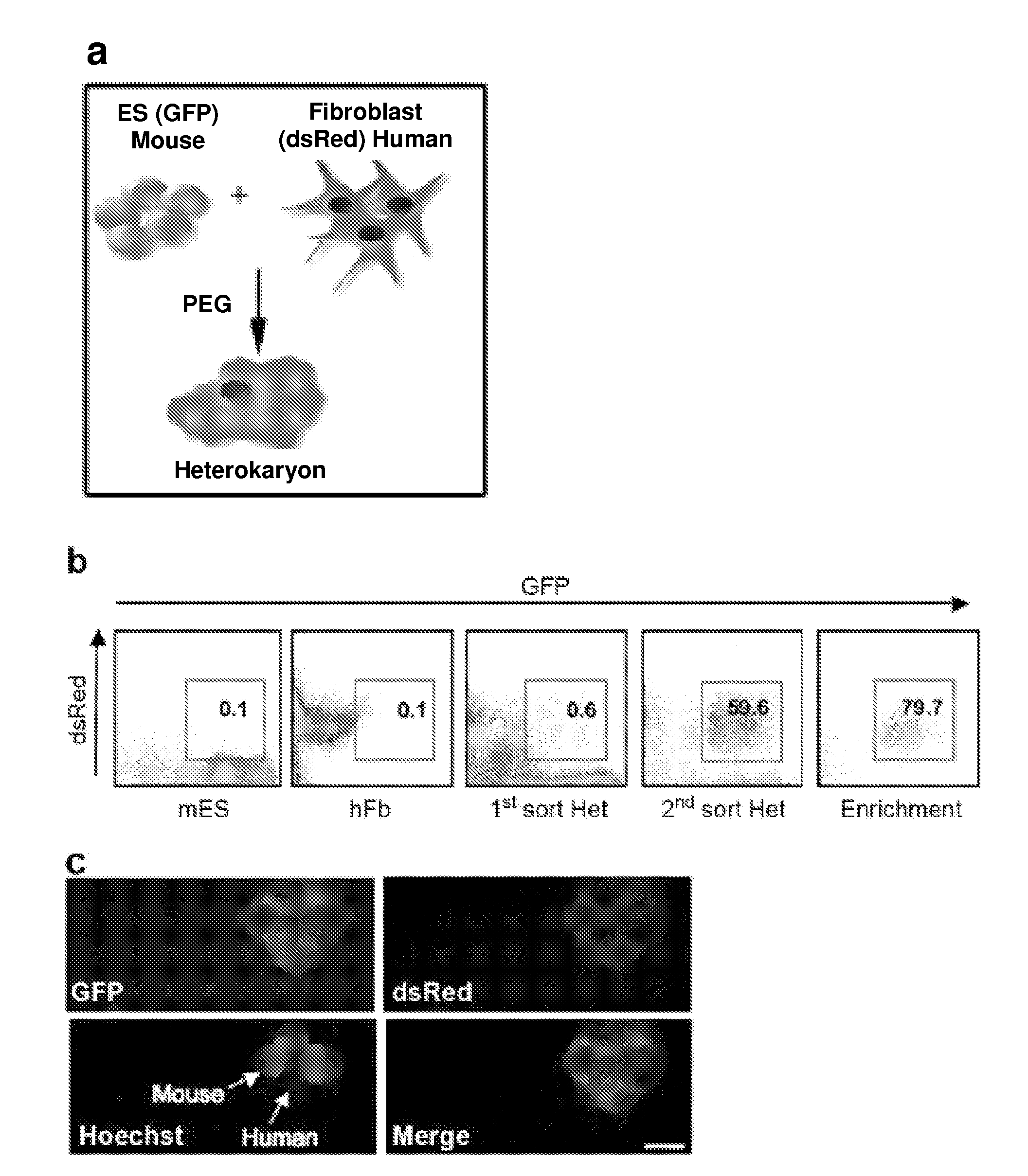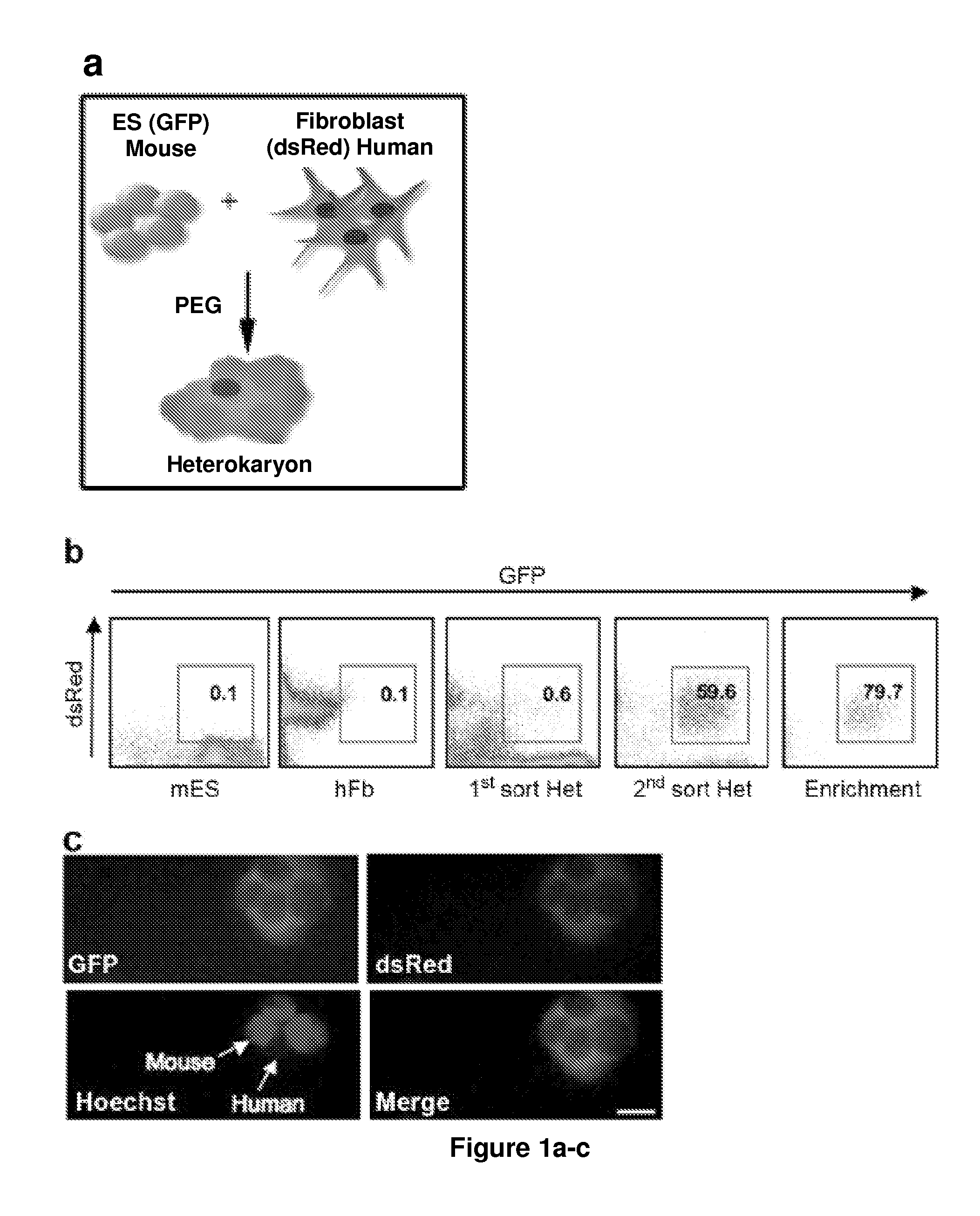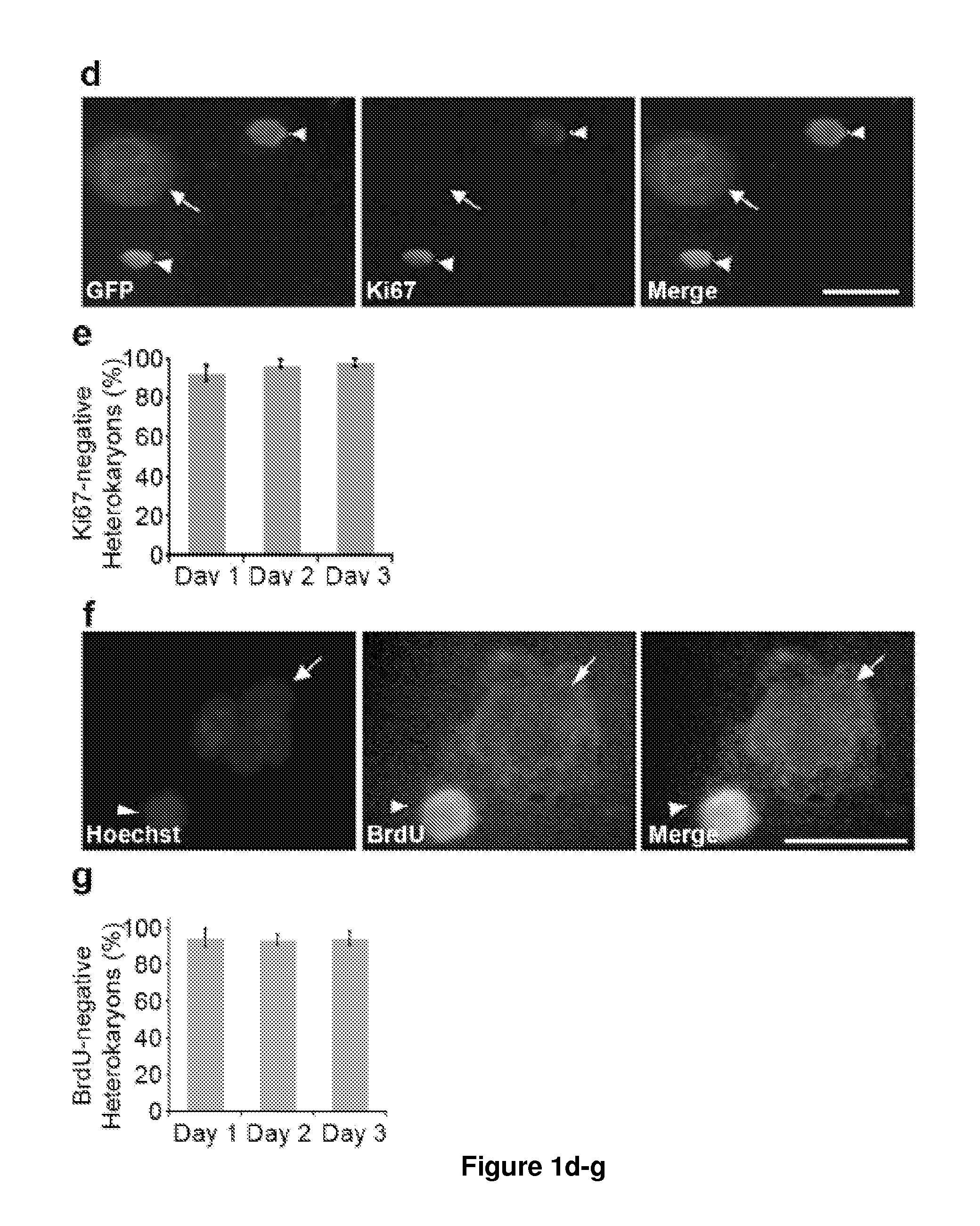Use of Cytidine Deaminase-Related Agents to Promote Demethylation and Cell Reprogramming
- Summary
- Abstract
- Description
- Claims
- Application Information
AI Technical Summary
Benefits of technology
Problems solved by technology
Method used
Image
Examples
example 1
[0163]To identify novel early regulators essential to nuclear reprogramming towards pluripotency, we capitalized on our previous experience with heterokaryons that proved useful in elucidating the principles inherent to the maintenance of the differentiated state of somatic cells. Specifically, these earlier studies by us and others showed that the “terminally differentiated” state of human cells was not fixed, but could be altered and the expression of previously silent genes typical of other differentiated states induced (Blau, H. M., et al. (1983) Cell 32, 1171-801; Baron, M. H. & Maniatis, T. (1986) Cell 46, 591-602; Wright, W. E. (1984) Exp Cell Res 151, 55-69; Spear, B. T. & Tilghman, S. M. (1990) Mol Cell Biot 10, 5047-54; Chiu, C. P. & Blau, H. M. R (1984) Cell 37, 879-87). We reasoned that heterokaryons could be used to elucidate mechanisms and identify novel genes with a role at the onset of reprogramming towards pluripotency because: (1) reprogramming takes place in the p...
example 2
[0204]Mass spectrometry was used to identify the potential interactors of AID and understand the functional molecular players that orchestrate mammalian DNA demethylation. The following AID constructs were used: 1) human AID containing two tandem Flag tags at the N-terminus of the protein, cloned into the pHAGE-STEMCCA lentiviral vector, and 2) human AID containing two tandem Flag tags at the C-terminus of the protein, cloned into the pHAGE-STEMCCA lentiviral vector. Virus containing these constructs was subsequently used to infect mouse embryonic stem cells (CGR8), and stable cell lines overexpressing Flag-human AID were selected. As a control, the lentiviral vector containing only the 2× Flag tag was used.
[0205]The stable ES cell lines expressing AID and Control 2× Flag were fractionated into cytoplasmic and nuclear extracts for immunoprecipitating the AID protein using an antibody against the Flag tag. The resulting complex was subjected to mass spectrometric analyses. In the ana...
PUM
| Property | Measurement | Unit |
|---|---|---|
| Volume | aaaaa | aaaaa |
| Volume | aaaaa | aaaaa |
| Volume | aaaaa | aaaaa |
Abstract
Description
Claims
Application Information
 Login to View More
Login to View More - R&D
- Intellectual Property
- Life Sciences
- Materials
- Tech Scout
- Unparalleled Data Quality
- Higher Quality Content
- 60% Fewer Hallucinations
Browse by: Latest US Patents, China's latest patents, Technical Efficacy Thesaurus, Application Domain, Technology Topic, Popular Technical Reports.
© 2025 PatSnap. All rights reserved.Legal|Privacy policy|Modern Slavery Act Transparency Statement|Sitemap|About US| Contact US: help@patsnap.com



